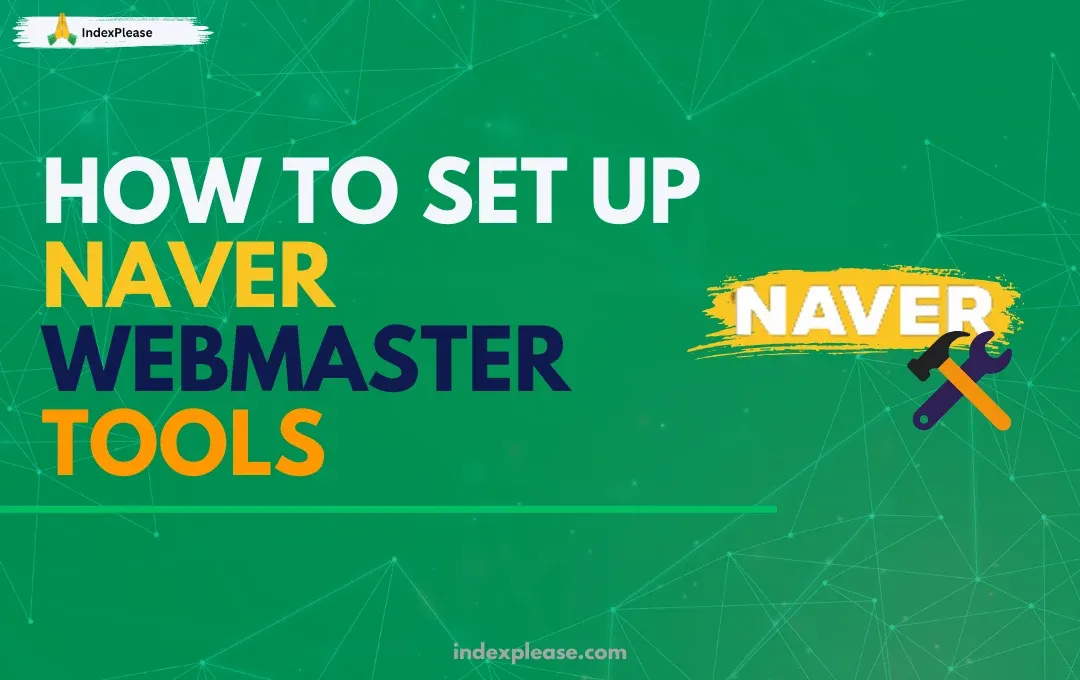
How to set up Naver Webmaster Tools
Ask any SEO what tool to use first and they’ll say Google Search Console. But in South Korea, Naver rules the search game, not Google.
Naver powers over 60% of search queries in Korea and its ecosystem includes everything from blogs and cafés to news, shopping and Q&A forums. If you want your website to show up in Naver’s SERPs, it starts with one step: setting up Naver Search Advisor (formerly Naver Webmaster Tools).
This isn’t just a checklist task, it’s the only way to:
- Submit your website
- Submit your sitemap
- Monitor what NaverBot (“Yeti”) is crawling
- Diagnose why your pages aren’t being indexed
And for those managing high-volume content or multiple Korean domains, tools like IndexPlease make it even easier to track, retry and automate across Naver + Google + Bing, all from one dashboard.
Let’s walk through the setup, step by step.
Why You Need Naver Webmaster Tools
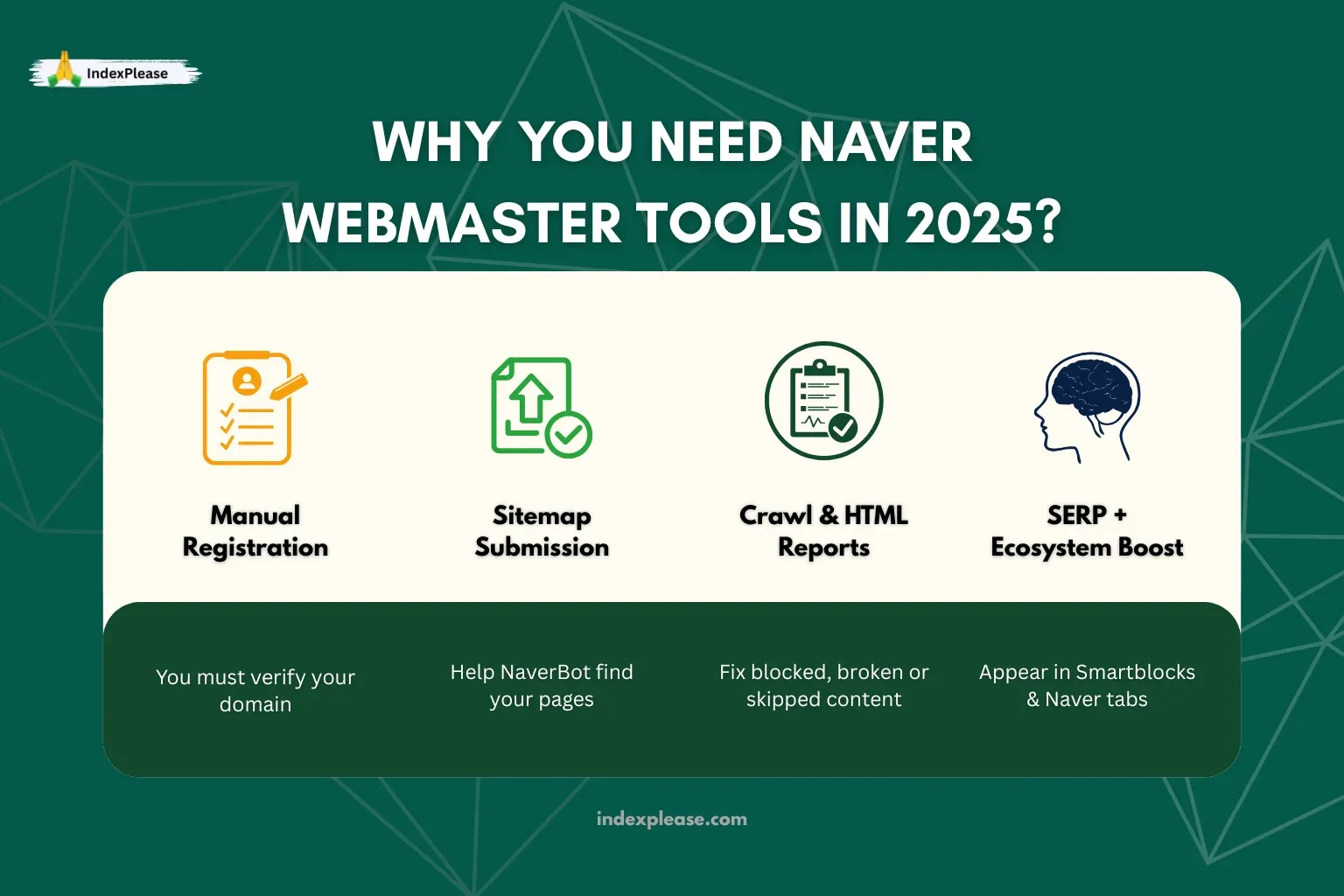
If your website targets Korean users and you’re not using Naver Search Advisor, you’re invisible to more than half the country’s search traffic.
Unlike Google, Naver won’t index your site automatically, especially if it’s hosted outside of Korea or lacks Korean-language metadata.
What Naver Webmaster Tools Unlocks:
Manual Site Registration You can’t get crawled by Naver’s bot (Yeti) without verifying your domain.
Sitemap Submission Helps NaverBot find all your URLs, especially those not linked from the homepage.
Crawl and Indexing Reports See how many pages are collected, blocked or skipped and why.
HTML Diagnostics Get alerts for broken tags, poor encoding or structural issues.
Search Appearance Reports See how your metadata appears in Naver SERPs (and fix it if needed).
Bonus: Better Performance in Naver Ecosystem
Once indexed, your content may also appear in:
- Smartblocks (featured snippets)
- Naver Blog, Café and Shopping tabs
- Integrated services like Naver Maps
Step-by-Step: How to Set Up Naver Webmaster Tools (Search Advisor)
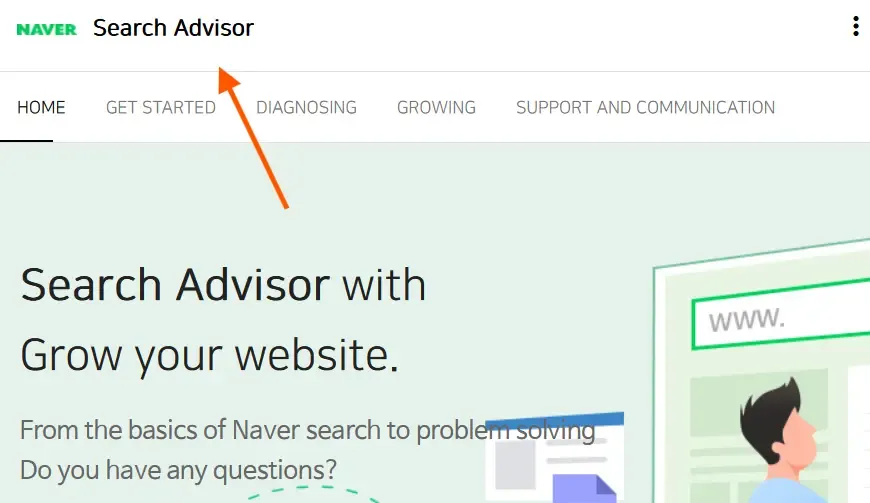
Setting up Naver Search Advisor isn’t difficult, but it’s a bit different from Google or Bing. Here’s exactly how to do it in 2025:
1. Visit the Search Advisor Portal
Go to https://searchadvisor.naver.com
2. Log In with a Naver Account
- If you don’t have one, you’ll need to create a Naver ID
- Some features (like phone verification) may require a Korean mobile number
3. Add Your Website
- Click “+ Add Site”
- Enter your full domain (e.g.,
https://yourdomain.kr) - Fill in basic details:
- Site name
- Site type (blog, news, shopping, etc.)
- Primary language (Korean preferred)
- Category (e.g., health, travel, education)
4. Verify Site Ownership
Choose from one of these methods:
- Meta tag, insert into your site’s
<head> - HTML file upload, place a verification file in your site’s root folder
- DNS TXT record, edit DNS settings at your hosting provider
Once added, click “Verify” to complete the process.
5. Get Dashboard Access
After verification:
- Naver will start crawling your site
- You can access tools for sitemaps, collected pages and diagnostics
- It may take a few days for initial crawl data to appear
Once this is done, you’re officially “connected” to Korea’s top search engine.
How to Submit Your Sitemap to Naver
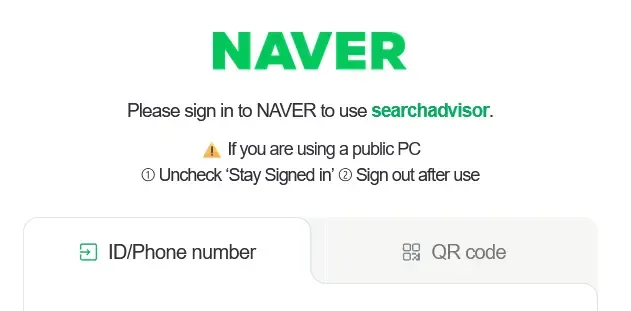
Submitting your sitemap is one of the most important steps after setting up Naver Search Advisor. Without it, NaverBot (Yeti) may never discover deeper content, especially if your homepage doesn’t link to everything.
What You’ll Need
- A valid XML sitemap, typically found at:
https://yourdomain.com/sitemap.xml - It must be UTF-8 encoded and list indexable pages only
Steps to Submit:
- Log in to https://searchadvisor.naver.com
- Select your verified site
- Go to the (Sitemap Submission) section
- Paste your full sitemap URL
- Click Submit
What Happens Next?
- NaverBot will periodically crawl your sitemap
- You’ll see how many URLs were fetched vs. indexed
- Errors (if any) will appear in the diagnostics tab
Best Practices:
- Include only canonical, crawlable URLs
- Update your sitemap when you publish/delete content
- Re-submit the sitemap after large content updates
Reference your sitemap in robots.txt:
Sitemap: https://yourdomain.com/sitemap.xml
Submitting your sitemap is your fastest route into Naver’s ecosystem, don’t skip it.
Explore Key Features in Naver Search Advisor
Once your site is verified and your sitemap is submitted, Naver Search Advisor becomes your main dashboard for crawl behavior, indexing health and visibility diagnostics on Naver.
Here are the most important sections to understand:
1. Collected Pages
- Shows which of your URLs have been crawled
- Includes crawl status, indexing status and exclusions
- If a page isn’t showing up here, it’s not being processed by Naver
2. Blocked URLs
- Lists URLs blocked by
robots.txt, metanoindexor crawl errors - Helps identify what’s preventing indexing
3. HTML and Metadata Diagnostics
- Flags pages with:
- Missing or duplicated
<title>or<meta description> - Encoding problems (non-UTF-8)
- Broken HTML/CSS structure
- Especially important for Korean-language formatting and rendering
4. Mobile Usability Checks
- Shows how your site renders on Naver mobile SERPs
- Flags layout problems, broken navigation or content clipping
5. Search Appearance Reports
- Preview how your pages appear in Naver results
- Helps ensure that Korean titles and metadata are correctly displayed
- Crucial for optimizing CTR in Naver’s Smartblock layout
Naver doesn’t provide as much transparency as Google, but Search Advisor is your only window into how Yeti sees and evaluates your content.
Common Naver Issues
Naver can be picky, even if your site works fine on Google, it might not get indexed here. But most problems are easy to fix once you know where to look.
1. Naver Isn’t Crawling My Site
Why it happens: Your site might be blocking Naver’s bot (called “Yeti”) without you knowing. Fix: Ask your developer to check the file called robots.txt, it should allow Yeti access.
2. My Pages Don’t Show in Naver
Why it happens: You might be missing titles or descriptions in Korean. Fix: Make sure your pages have a proper title and description, written in Korean. That’s what Naver uses to understand your content.
3. My Site Looks Weird or Blank
Why it happens: Your site might not be using the correct text format (called UTF-8). Fix: Most modern websites use UTF-8 already. But if not, ask your developer to make sure it’s added, this helps Naver read Korean characters properly.
4. My Site Is Built with Too Much JavaScript
Why it happens: Sites that load content only after clicking or scrolling may confuse Naver’s bot. Fix: Try to keep your main content (headings, text, images) visible when the page first loads.
5. My Content Is Too Short or Not Original
Why it happens: Naver skips pages it sees as low-quality or copied from other sites. Fix: Make sure your content is helpful, detailed and written uniquely for Korean users, not just translated.
These are the most common issues. If your site isn’t getting indexed, fixing just one or two of these can make a big difference.
How IndexPlease Makes Naver Indexing Easier
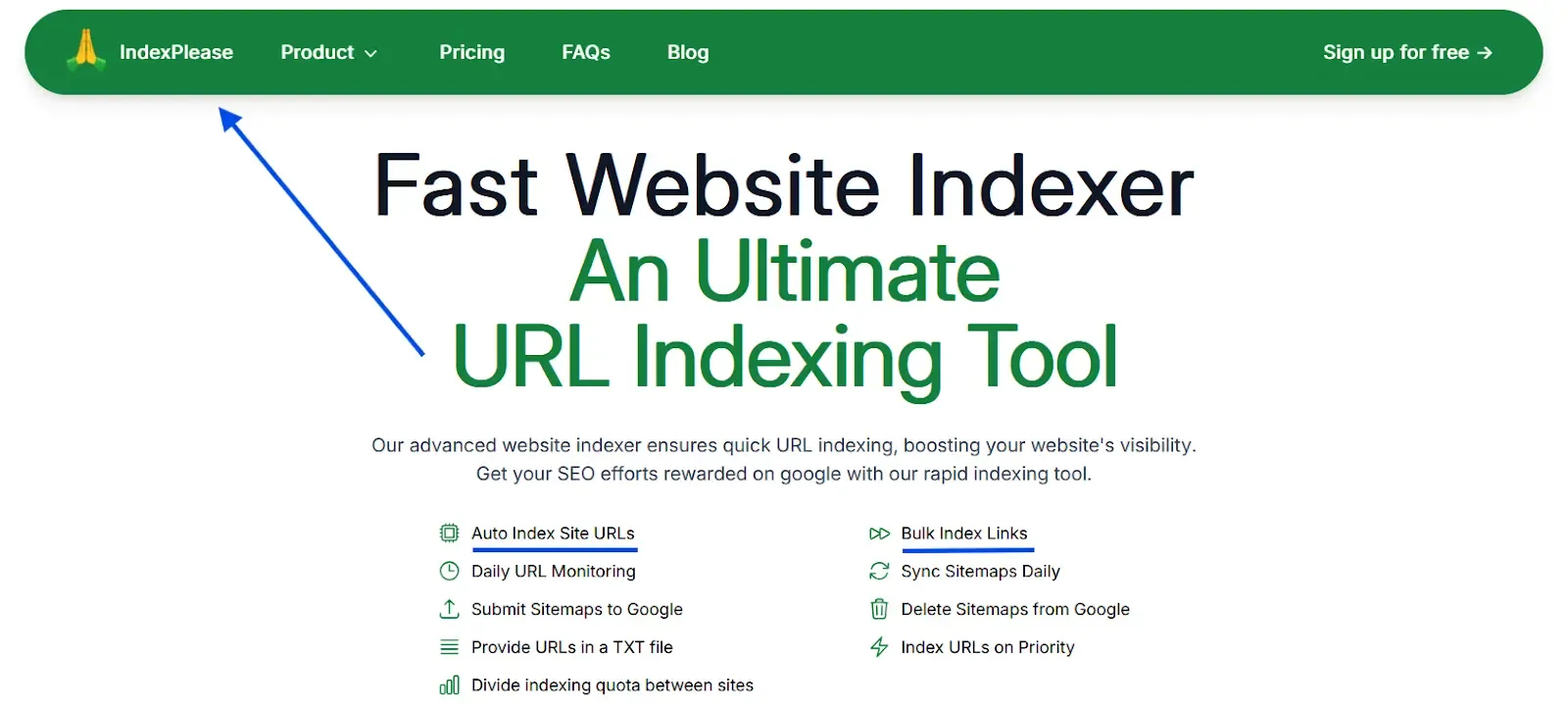
If you only manage one website, Naver Search Advisor is enough. But if you’re running a blog, business site or multiple domains, it quickly becomes overwhelming to check everything manually.
That’s where IndexPlease comes in.
What IndexPlease Does for You:
Keeps Track of Which Pages Got Indexed
No more guessing. IndexPlease shows you which Korean pages Naver picked up and which ones still aren’t showing.
Automatically Re-Submits Skipped Pages
If a page wasn’t indexed the first time, IndexPlease will try again automatically. You don’t have to remember or do anything manually.
Works Across Multiple Sites and Languages
Running .kr, .com and other domains together? IndexPlease handles all of them, including English + Korean pages, in one dashboard.
Gives You a Clear View
Instead of jumping between tools, you’ll see everything in one place:
- Pages indexed
- Pages pending
- Pages with issues
Think of IndexPlease as your indexing assistant, working in the background so you can focus on your content.
Final Thoughts
If your audience is in South Korea, then Naver isn’t optional, it’s essential. Setting up Naver Search Advisor is the first step to making your website show up in Korean search results. Without it, Naver’s bot (Yeti) might never discover your content, no matter how good it is.
Here’s the good news:
- The setup takes just a few minutes
- Submitting your sitemap helps Naver find all your pages
- Fixing a few basic things (like Korean titles and readable HTML) can make a big difference
And if you’re managing multiple pages, blogs or domains, IndexPlease makes the rest easier by helping you track, retry and stay in control of indexing across Naver, Google and Bing from one dashboard. Get your site into Naver. Then let IndexPlease help you stay there.
FAQs
1. Is Naver Webmaster Tools free to use?
Yes, Naver Search Advisor is completely free.
2. Do I need a Korean phone number to register?
You’ll need a Naver account. Some verification steps (like blog access) may require a Korean mobile number, but basic site tools do not.
3. Does Naver index English websites?
Yes, but it prefers Korean-language content. Korean meta tags and page structure improve your chances of getting indexed.
4. How often does NaverBot (Yeti) crawl my site?
It depends on your content quality, freshness and links. It’s usually slower than Google, especially for new or inactive sites.
5. What if my site doesn’t show up in Naver search?
Check:
- That you’ve submitted your sitemap
- That you aren’t blocking Yeti in robots.txt
- That your metadata is in Korean and not missing
6. Can I track which pages are indexed?
Yes. Naver Search Advisor shows a list of “Collected Pages.” These are the ones Naver has crawled.
7. Can I use the same sitemap I submitted to Google?
Yes, as long as it’s clean, UTF-8 encoded and doesn’t include broken or blocked pages.
8. How is Naver indexing different from Google?
Naver is stricter, crawls slower and doesn’t handle JavaScript-heavy pages well. It also relies more on Korean content and internal systems like Naver Blog and Smartblocks.
9. Does IndexPlease work with Korean sites?
Yes. IndexPlease supports .kr, .com and Korean-language pages, helping you monitor indexing across Naver, Google and Bing.
10. Is Naver Blog better than using a regular website?
Naver Blog posts are indexed faster and rank well inside the Naver ecosystem. But for long-term control and branding, a standalone website + Naver Search Advisor is ideal.